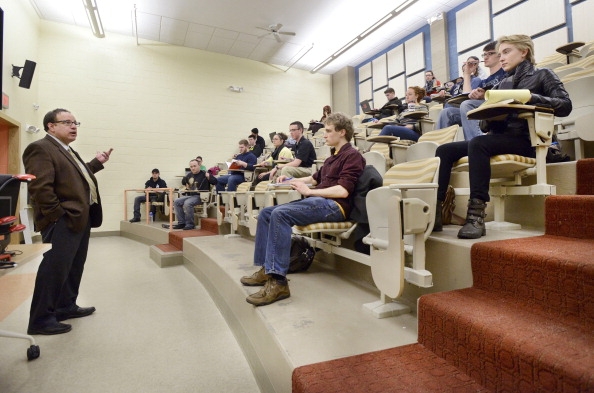You have /5 articles left.
Sign up for a free account or log in.

Photo by John Patriquin / Portland Press Herald via Getty Images
Faculty members on and off the tenure track are circulating a petition seeking to change the way U.S. News & World Report measures "faculty resources," an important part of the formula used to rank colleges.
Currently, the faculty resources section counts for 20 percent of the total points a college may earn. Within the category, 5 percent (or 1 percent of the total) is based on the percentage of full-time faculty members. And U.S. News has pointed to that as evidence that it is aware of the importance of having full-time faculty members. But 35 percent of the faculty resources total (or 7 percent of the total) is based on faculty salaries and benefits. And it's this part of the formula to which advocates for adjuncts object.
The calculation is based only on full-time faculty members' salaries, a categorization that is dominated at most institutions by those who are tenured or on the tenure track. That means that a college that pays its full-timers well, and is miserly with its part-timers, is judged the same as one that is generous to both groups. And at the many research universities where much undergraduate teaching is done by part-timers, the hefty salaries for faculty members who may be focused on research make the institution look commendable with regard to faculty resources, even if those doing the actual teaching are paid but a fraction (prorated) of their full-time colleagues' salaries.
"A university that mistreats its [non-full-time] employees this way is not giving its students a good education -- no matter how much it may pay its few remaining tenure-track faculty members," says the petition. "Please consider switching the percentages for faculty salaries and part-timers to reflect the reality of today’s campuses."
Will U.S. News be changing its methodology? Don't hold your breath. The magazine cites a problem with data.
"It is true that in our Best Colleges methodology, U.S. News uses the average faculty salary of full-time faculty as one indicator of faculty resources," said Robert Morse, who oversees the rankings, in an email. "In terms of analyzing part-time faculty salaries, this would need to be looked at separately. At this time, we are not aware of agreed-upon standards or definitions that could be used to collect this information on part-time faculty salaries."
Morse is correct that there are not national data sets on par with that of the American Association of University Professors' research on full-time professors' salaries and benefits, which includes institution-by-institution data for various faculty ranks. At the same time, numerous studies have shown that part-timers are paid much less, on average, per course taught than are full-timers and frequently lack comparable benefits.




